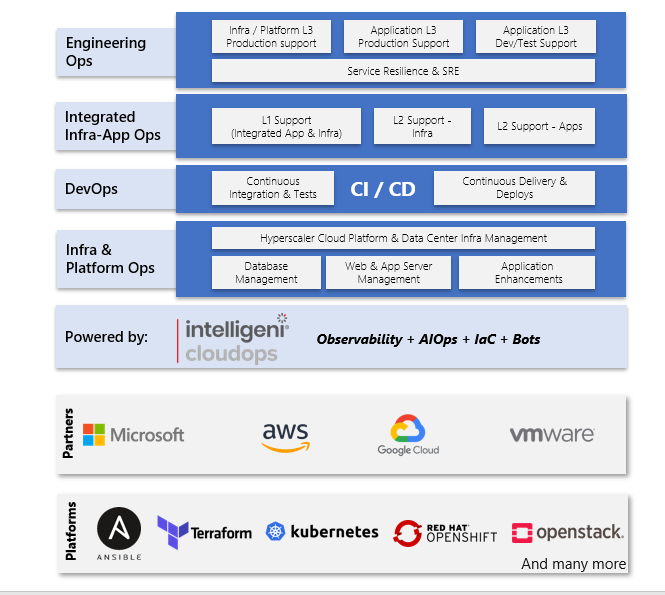and we will be happy to help
Cloud Operations
Run, manage, and operate your cloud workloads with secure, compliant, and reliable cloud operations services
The complexity of monitoring and managing a distributed IT environment keeps increasing as businesses move their workloads to the cloud. Enterprises must invest in specialized skills, approaches, and tools to ensure reliable and secure operations in the cloud.
Microland’s well-oiled approach to hybrid and multi-cloud operations combines the best of both public and private cloud environments. It leverages the latest technologies and best practices to deliver exceptional efficiency, agility, and security. With our Cloud Operation services, enterprises can take full advantage of the flexibility, scalability, and cost benefits of multiple public clouds with the security and control of a private cloud. It also enables multi-cloud governance with well-defined compliance policies and a streamlined change management approach.
Our team of highly skilled cloud professionals is dedicated to helping organizations get the most out of their cloud investments. We leverage a combination of automation and hands-on expertise to ensure your enterprise systems are running smoothly and efficiently. Our Cloud Operations offers a gamut of features making it a one-stop solution to streamline your enterprise cloud operations. These include:
- Flexibility: Our hybrid, multi-cloud approach allows enterprises to choose the best mix of hyperscalers and private cloud environments to meet their specific business needs.
- Cost-effectiveness: Our team of experts helps optimize enterprise cloud costs by up to 30%, ensuring our clients pay only for the resources they need and cut down on unnecessary expenses.
- Security and compliance: We place a strong emphasis on security and compliance, with mechanisms in place to ensure data is 100% compliant with all applicable regulatory requirements.
- Platform-Delivered: Intelligeni CloudOps, our proprietary automation platform streamlines cloud operations by improving efficiency and reducing the need for manual intervention by 30%.
- Expertise and Experience: Our team of highly skilled and certified cloud professionals has the experience and expertise to ensure enterprise systems are up and running without any disruption.
Intelligeni CloudOps
At the core of our Hybrid Cloud Operations services is our hybrid and multi-cloud management platform, Intelligeni CloudOps, which is fully integrated with GitOps principles and designed to enable observability, financial optimization (FinOps), and auto-remediation (AutomatedOps) to deliver unparalleled efficiency, agility, and security to our clients.
Intelligeni CloudOps is fully compatible with GitOps, a methodology that uses Git as a single source of truth for infrastructure and application code. This allows us to easily track changes to the IaC code and roll back if necessary, ensuring that the infrastructure is always in a stable state. It helps streamline cloud operations, improve efficiency, and reduce manual errors. It is used for a diverse set of cloud operations, such as configuring and provisioning resources, deploying, and updating applications, and enforcing cost, compliance, and security policies across multiple cloud environments.
In addition to GitOps, Intelligeni CloudOps incorporates AutomatedOps, Microland’s automation-first approach to managing and maintaining cloud infrastructure. It includes features that enable observability for accurate and faster diagnosis, root cause analysis, and bots for auto-remediation, ensuring that the enterprise infrastructure is resilient and performant. The platform continuously analyzes usage patterns and identifies opportunities to reduce costs and improve efficiency with FinOps best practices.
Contact us at [email protected] to learn more about how Microland can help organizations succeed in the cloud with GitOps, observability, and FinOps.









